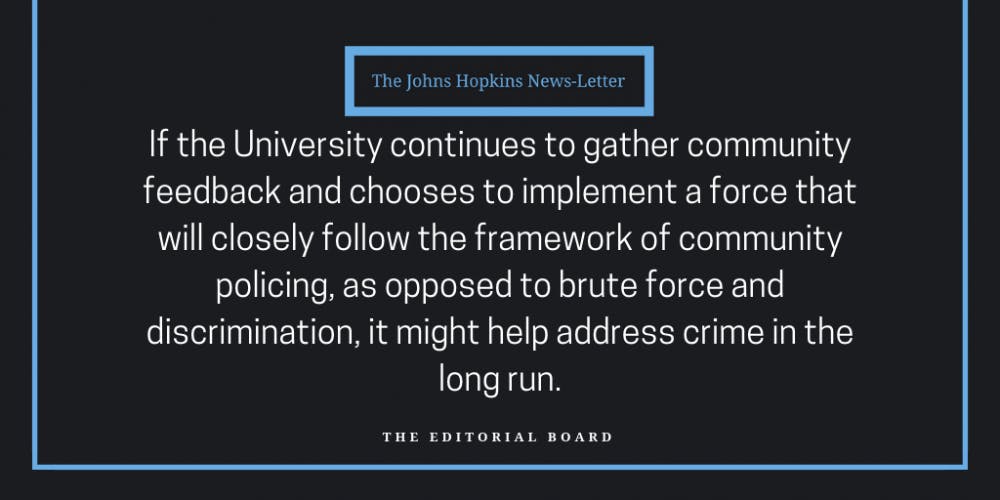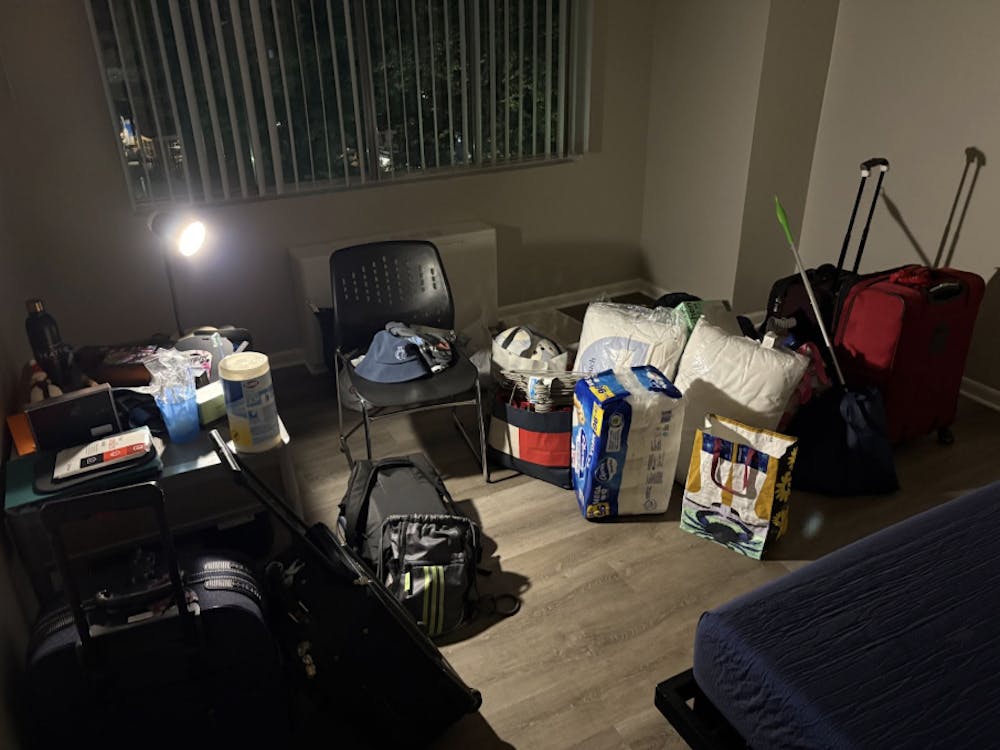After University officials failed to pass legislation that would have enabled them to create a private police force last semester, they announced that they would spend the next several months gathering student and community input to revise the bill.
As part of this effort, University President Ronald J. Daniels sent an email on Monday in which he discussed “opportunities for dialogue” on the school’s security operations. Daniels detailed four such opportunities, which include a discussion series, open forums, small group meetings and a dedicated website titled Public Safety Initiatives with ample information and materials.
The site emphasizes that, due to the fact that security challenges on and around campus are still prevalent, the need for a Hopkins police department remains. Furthermore, it notes that if such a police force were created, its officers would have full police powers and would be subject to constitutional protections and limitations at both the state and federal levels.
Monday’s email announcement demonstrates that the University is willing to improve its efforts at community outreach. This is a critical step that may be the difference between a private police force that makes students — particularly those of color — feel unsafe, and a private police force that addresses pressing security issues without alienating the Hopkins and Baltimore community.
When we previously expressed our opposition to a private police force, we did not deny that crime itself is a problem. Last year, the number of homicides peaked at 342, and Homewood Campus experienced a rise in armed and unarmed robberies. We believe that it’s important to substantially reduce crime, and we believe that it’s essential to ensure that all Baltimore residents, including those at Hopkins, feel safe. But as of now, the police in this city have done neither.
The Baltimore Police Department (BPD) and other police departments throughout the nation have tried to address crime through punitive measures that have often escalated to police brutality. Many BPD cops have not only abused their power and intimidated vulnerable communities, but they have also failed to address the root causes of crime.
There are several variables that contribute to crime in Baltimore, and the people here have no control over many of them. Today, our city continues to suffer from the legacy of racist redlining policies, and people in predominantly black communities struggle with systemic poverty, poorly developed infrastructure and inequitable healthcare and education systems.
Through community outreach, Hopkins will be taking on a long-term plan that has the potential to reverse the persisting trend of high crime rates. Instead of punishing people from such communities who’ve committed crimes, police need to think critically about how to help them, and that starts with listening to community members.
Community policing is not a new idea. In 1994, the Bureau of Justice Assistance (BJA) published a document titled “Understanding Community Policing.” It outlines two core components of the strategy: community partnerships and problem solving.
These components are straightforward, and if the University continues on its current trajectory of soliciting feedback and community input, it may be on its way to realizing them in a private police force.
In forming community partnerships, police would work together with community members to alleviate the root causes of crime. They may provide emergency aid to low-income people, improve infrastructure or even help peacefully resolve disputes. In order to do so, they must begin by building trust with these community members. This would require direct outreach and listening to the concerns of residents.
After gathering thorough community input and familiarizing themselves with communities, law enforcement would then begin problem solving: coming up with specific strategies that directly correspond with the desires of community members.
This framework is simple — albeit time intensive — but law enforcement in our city has thus far failed to meet these standards. And while it’s true that the BPD claims to practice community policing, their efforts have been superficial, and they continue to betray our trust through violence, blatant racism and corruption.
We are not enthusiastic about a private police force. But we believe that if the University continues to gather community feedback and chooses to implement a force that will closely follow the framework of community policing, as opposed to brute force and discrimination, it might help address crime in the long run.
The University has been complicit in fostering systemic inequities in the city that contribute directly to crime. Although Hopkins contributes “payments in lieu of taxes,” also known as PILOTS, we believe that it can do more to invest in the city. When it has attempted to “develop” its communities, development projects have often displaced legacy residents or primarily served to benefit new residents. Perhaps too many of us at Hopkins are ready to decide what the city needs without first hearing from the people who live in it.
We hope that University officials will change that as they move forward with community outreach initiatives. In doing so, they may be able to not only address crime, but also ensure that all of our community members feel safe and place their trust in the police who are supposed to protect them. Perhaps, if it puts in the effort, Hopkins can build a police force that will be a model for our city’s.





